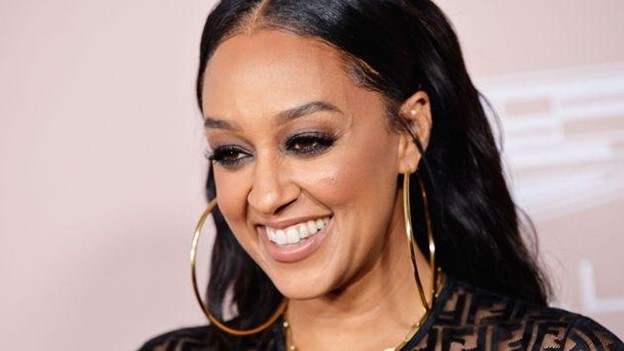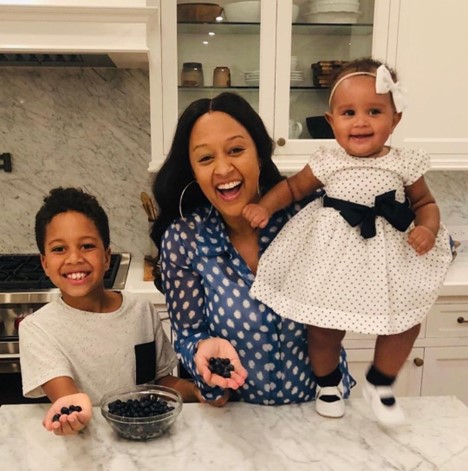
About Us
The Reality Medic is a safe space dedicated to empowering women with valuable health insights, fostering community, and shedding light on the realities of health conditions.

#Health
Access accurate, reliable, and accessible information on a wide array of women’s health topics. From reproductive health to mental well-being, nutrition to fitness, we’re here to guide and support you on your unique health journey.

#RealityTV
We love reality TV and recognize the significant impact it can have on shaping health perceptions, especially among women. We strive to initiate meaningful dialogues that encourage a more balanced and realistic view of health using the experiences of your favourite stars.

#OBGYNBible
Dive into our health bible where we spotlight and raise awareness about the health conditions of women in the Bible. Our aim is to empower you with a deeper appreciation of women’s health throughout history and bridge the gap between ancient wisdom and modern understanding.

#DrO
Dr Ogo Okpala is an ob-gyn specialist, mum and women’s health advocate. Through this blog, she aims to reassure you that you’re not alone in your health struggles. You’ll find her notes at the end of every blog post.
Featured Posts
Living and Thriving: Tia Mowry’s Triumph Over Endometriosis
Learn how Tia Mowry continues to thrive whilst managing a chronic condition.

“You know your body more than anyone. You are the one living with what you’re going through day in and day out. Don’t let anyone tell you that something is not wrong with you.”
When it comes to misdiagnosis, Tia Mowry is no stranger, and this applies to many women around the world. Another thing Mowry is no stranger to is feeling alone in her health issues.
Loneliness is often associated with health conditions, especially chronic ones like endometriosis. Since it can also lead to worsened health outcomes, Tia encourages women to share their stories.
This is Tia Mowry’s story.
What Is Endometriosis?

Endometriosis is a disorder in which endometrial tissue, the tissue which normally lines the inner wall of your uterus grows outside your uterus. It typically affects your fallopian tubes, ovaries and pelvic area.
What makes this a big deal is the fact that this tissue works the same way the tissue in your uterus does. It breaks down into blood during your menstrual cycle but since it has no way to leave the body through your vagina, it gets trapped and becomes “poison.”
This leads to severe pain, especially during your menstrual period. It can also lead to scar tissue and cyst formation, irritation of the surrounding organs and in some cases, fertility problems.
Besides severe period pain, endometriosis is commonly associated with excessive period bleeding, pain during sex, painful urination, diarrhoea and constipation during periods. It is often confused with Pelvic Inflammatory Disease and Inflammatory Bowel Syndrome since they are accompanied by pelvic pain and constipation respectively.
The exact cause is unknown, but hormonal and immune factors play a part. In some cases, the immune system is unable to recognize and destroy endometrial tissue growing outside the uterus.
For others, it could be a retrograde menstruation problem; a backflow of menstrual blood into the pelvic space instead of out of the body. The endometrial cells in the blood end up sticking to the walls of your pelvic area, thickening over time and leading to endometriosis.
Enough with the technical health terms; let’s see endometriosis through Mowry’s eyes, shall we?
Mowry’s Journey

After years of battling undiagnosed symptoms, the Sister, Sister star was finally diagnosed with endometriosis at age 30.
Mowry was diagnosed via laparoscopy, a minimally invasive surgical process involving a tube inserted into the abdomen, usually via the umbilicus (belly button), and a camera to provide real-time images of internal organs. This process was also used to manage Mowry’s endometriosis.
Although incurable, endometriosis can be managed by attending to its symptoms. This includes painkillers for severe pain and removal of the endometrial tissue using laparoscopy.
As someone living with endometriosis, Mowry has had pain so intense she almost blacked out. Imagine going through that and not getting the support or treatment you need. In an interview with Today, the actress said “I was not being taken very seriously when it came to my symptoms,” expressing how lost she felt.
Mowry ended up consulting with a gynaecologist who diagnosed her with endometriosis.
“When she told me that, I couldn’t even pronounce the word. It was something that wasn’t talked about, but she told me how she knew was my symptoms. I’m a Black woman, and I was in the age range. I was basically a textbook story.”
Although the prevalence of endometriosis in black women is low compared to other races, Mowry did fall between the at-risk age range of 19-52. She however expressed disappointment at how she had to suffer for years because other doctors could not diagnose her.
“Why didn’t the other doctors diagnose me if I was a textbook story?”
Living With Endometriosis

Mowry had to deal with fertility struggles in conjunction with the pain. She is now a mother of two and continues to share details about her complicated path to starting a family.
“I never heard the word ‘infertility’ growing up. It just wasn’t part of conversations with my family and friends. We as women growing up, we are just like, ‘OK, I’m going to get married, I’m going to have kids.’ You have your life planned out and it doesn’t always work that way.”
She spoke of the pains she experienced during her pregnancies and how the doctors worried she might have ectopic pregnancies.
“When you have endometriosis you’re prone to having an ectopic pregnancy, because of the scar tissue.”
Regarding recovery, Mowry also had to make some changes to her diet. She cut off inflammatory foods like dairy, processed sugar and alcohol and incorporated probiotics and healthy foods such as fruits and legumes.
“Once I changed my diet, I started to see changes in my body. Not only did my symptoms literally disappear with endometriosis, but other ailments like migraines and eczema also went away. I started to see correlations with how food can be healing.”
Takeaway
Tia Mowry’s journey emphasizes the need for support and awareness in women’s healthcare.
“I don’t want people to feel or go through what I went through with being diagnosed and trying to understand what that means.”
“I think it’s really important that someone is there encouraging you, rooting you on, saying you’re not alone, helping you feel stronger and more powerful.”
We’re rooting for you!
Dr O’s Notes
Endometriosis is a tough one. It can be challenging to diagnose. The gold standard is laparoscopy, but if a parent has confirmed endometriosis, and a patient has the relevant symptoms, there is a 70% chance that the diagnosis is endometriosis, even without exploratory surgery.
Endometriosis is a chronic condition. It does tend to get better after having children, if pregnancy happens.
